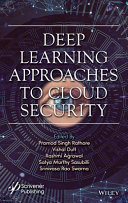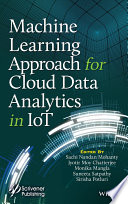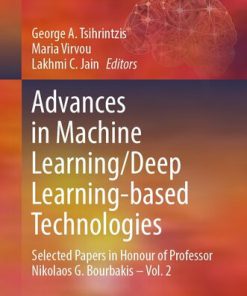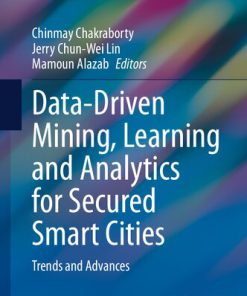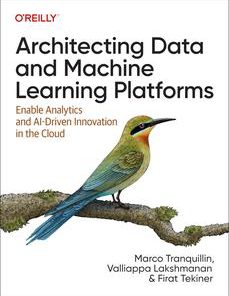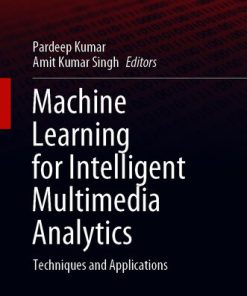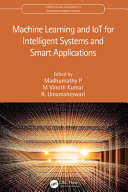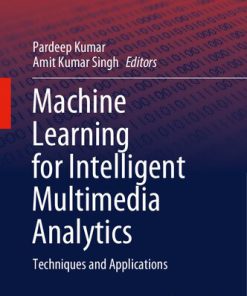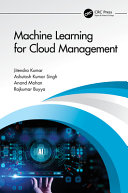Machine Learning Techniques and Analytics for Cloud Security Advances in Learning Analytics for Intelligent Cloud IoT Systems 1st Edition by Chakraborty 9781119764090 1119764092
$50.00 Original price was: $50.00.$25.00Current price is: $25.00.
Machine Learning Techniques and Analytics for Cloud Security Advances in Learning Analytics for Intelligent Cloud IoT Systems 1st Edition by Chakraborty – Ebook PDF Instant Download/Delivery:9781119764090, 1119764092
Full download Machine Learning Techniques and Analytics for Cloud Security Advances in Learning Analytics for Intelligent Cloud IoT Systems 1st Edition after payment
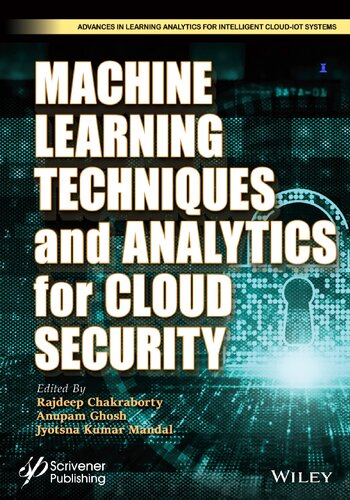
Product details:
ISBN 10: 1119764092
ISBN 13: 9781119764090
Author: Chakraborty
MACHINE LEARNING TECHNIQUES AND ANALYTICS FOR CLOUD SECURITY This book covers new methods, surveys, case studies, and policy with almost all machine learning techniques and analytics for cloud security solutions The aim of Machine Learning Techniques and Analytics for Cloud Security is to integrate machine learning approaches to meet various analytical issues in cloud security. Cloud security with ML has long-standing challenges that require methodological and theoretical handling. The conventional cryptography approach is less applied in resource-constrained devices. To solve these issues, the machine learning approach may be effectively used in providing security to the vast growing cloud environment. Machine learning algorithms can also be used to meet various cloud security issues, such as effective intrusion detection systems, zero-knowledge authentication systems, measures for passive attacks, protocols design, privacy system designs, applications, and many more. The book also contains case studies/projects outlining how to implement various security features using machine learning algorithms and analytics on existing cloud-based products in public, private and hybrid cloud respectively. Audience Research scholars and industry engineers in computer sciences, electrical and electronics engineering, machine learning, computer security, information technology, and cryptography.
Machine Learning Techniques and Analytics for Cloud Security Advances in Learning Analytics for Intelligent Cloud IoT Systems 1st Table of contents:
Part I: Conceptual Aspects on Cloud and Applications of Machine Learning
1: Hybrid Cloud: A New Paradigm in Cloud Computing
1.1 Introduction
1.2 Hybrid Cloud
1.3 Comparison Among Different Hybrid Cloud Providers
1.4 Hybrid Cloud in Education
1.5 Significance of Hybrid Cloud Post-Pandemic
1.6 Security in Hybrid Cloud
1.7 Use of AI in Hybrid Cloud
1.8 Future Research Direction
1.9 Conclusion
References
2: Recognition of Differentially Expressed Glycan Structure of H1N1 Virus Using Unsupervised Learning Framework
2.1 Introduction
2.2 Proposed Methodology
2.3 Result
2.4 Conclusions and Future Work
References
3: Selection of Certain Cancer Mediating Genes Using a Hybrid Model Logistic Regression Supported by Principal Component Analysis (PC-LR)
3.1 Introduction
3.2 Related Methods
3.3 Methodology
3.4 Result
3.5 Application in Cloud Domain
3.6 Conclusion
References
Part II: Cloud Security Systems Using Machine Learning Techniques
4: Cost-Effective Voice-Controlled Real-Time Smart Informative Interface Design With Google Assistance Technology
4.1 Introduction
4.2 Home Automation System
4.3 Literature Review
4.4 Role of Sensors and Microcontrollers in Smart Home Design
4.5 Motivation of the Project
4.6 Smart Informative and Command Accepting Interface
4.7 Data Flow Diagram
4.8 Components of Informative Interface
4.9 Results
4.10 Conclusion
4.11 Future Scope
References
5: Symmetric Key and Artificial Neural Network With Mealy Machine: A Neoteric Model of Cryptosystem for Cloud Security
5.1 Introduction
5.2 Literature Review
5.3 The Problem
5.4 Objectives and Contributions
5.5 Methodology
5.6 Results and Discussions
5.7 Conclusions
References
6: An Efficient Intrusion Detection System on Various Datasets Using Machine Learning Techniques
6.1 Introduction
6.2 Motivation and Justification of the Proposed Work
6.3 Terminology Related to IDS
6.4 Intrusion Attacks on Cloud Environment
6.5 Comparative Studies
6.6 Proposed Methodology
6.7 Result
6.8 Conclusion and Future Scope
References
7: You Are Known by Your Mood: A Text-Based Sentiment Analysis for Cloud Security
7.1 Introduction
7.2 Literature Review
7.3 Essential Prerequisites
7.4 Proposed Model
7.5 Experimental Setup
7.6 Results and Discussions
7.7 Application in Cloud Security
7.8 Conclusion and Future Scope
References
8: The State-of-the-Art in Zero-Knowledge Authentication Proof for Cloud
8.1 Introduction
8.2 Attacks and Countermeasures
8.3 Zero-Knowledge Proof
8.4 Machine Learning for Cloud Computing
8.5 Zero-Knowledge Proof: Details
8.6 Conclusion
References
9: A Robust Approach for Effective Spam Detection Using Supervised Learning Techniques
9.1 Introduction
9.2 Literature Review
9.3 Motivation
9.4 System Overview
9.5 Data Description
9.6 Data Processing
9.7 Feature Extraction
9.8 Learning Techniques Used
9.9 Experimental Setup
9.10 Evaluation Metrics
9.11 Experimental Results
9.12 Application in Cloud Architecture
9.13 Conclusion
References
10: An Intelligent System for Securing Network From Intrusion Detection and Prevention of Phishing Attack Using Machine Learning Approaches
10.1 Introduction
10.2 Literature Review
10.3 Materials and Methods
10.4 Result Analysis
10.5 Conclusion
References
Part III: Cloud Security Analysis Using Machine Learning Techniques
11: Cloud Security Using Honeypot Network and Blockchain: A Review
11.1 Introduction
11.2 Cloud Computing Overview
11.3 Honeypot System
11.4 Blockchain
11.6 Comparative Analysis
11.7 Conclusion
References
12: Machine Learning–Based Security in Cloud Database—A Survey
12.1 Introduction
12.2 Security Threats and Attacks
12.3 Dataset Description
12.4 Machine Learning for Cloud Security
12.5 Comparative Analysis
12.6 Conclusion
References
13: Machine Learning Adversarial Attacks: A Survey Beyond
13.1 Introduction
13.2 Adversarial Learning
13.3 Taxonomy of Adversarial Attacks
13.4 Review of Adversarial Attack Methods
13.5 Adversarial Attacks on Cloud-Based Platforms
13.6 Conclusion
References
14: Protocols for Cloud Security
14.1 Introduction
14.2 System and Adversarial Model
14.3 Protocols for Data Protection in Secure Cloud Computing
14.4 Protocols for Data Protection in Secure Cloud Storage
14.5 Protocols for Secure Cloud Systems
14.6 Protocols for Cloud Security in the Future
14.7 Conclusion
References
Part IV: Case Studies Focused on Cloud Security
15: A Study on Google Cloud Platform (GCP) and Its Security
15.1 Introduction
15.2 Google Cloud Platform’s Security Features Basic Overview
15.3 Google Cloud Platform’s Architecture
15.4 Key Security Features
15.5 Key Application Features
15.6 Computation in Google Cloud Platform
15.7 Storage in Google Cloud Platform
15.8 Network in Google Cloud Platform
15.9 Data in Google Cloud Platform
15.10 Machine Learning in Google Cloud Platform
15.11 Conclusion
References
16: Case Study of Azure and Azure Security Practices
16.1 Introduction
16.2 Microsoft Azure—The Security Infrastructure
16.3 Data Encryption
16.4 Azure Cloud Security Architecture
16.5 Azure Architecture
16.6 Features of Azure
16.7 Common Azure Security Features
16.8 Conclusion
References
17: Nutanix Hybrid Cloud From Security Perspective
17.1 Introduction
17.2 Growth of Nutanix
17.3 Introductory Concepts
17.4 Nutanix Hybrid Cloud
17.5 Reinforcing AHV and Controller VM
17.6 Disaster Management and Recovery
17.7 Security and Policy Management on Nutanix Hybrid Cloud
17.8 Network Security and Log Management
17.9 Conclusion
References
Part V: Policy Aspects
18: A Data Science Approach Based on User Interactions to Generate Access Control Policies for Large Collections of Documents
18.1 Introduction
18.2 Related Work
18.3 Network Science Theory
18.4 Approach to Spread Policies Using Networks Science
18.5 Evaluation
18.6 Conclusions
References
19: AI, ML, & Robotics in iSchools: An Academic Analysis for an Intelligent Societal Systems
19.1 Introduction
19.2 Objective
19.3 Methodology
19.4 Artificial Intelligence, ML, and Robotics: An Overview
19.5 Artificial Intelligence, ML, and Robotics as an Academic Program: A Case on iSchools—North American Region
19.6 Suggestions
19.7 Motivation and Future Works
19.8 Conclusion
References
People also search for Machine Learning Techniques and Analytics for Cloud Security Advances in Learning Analytics for Intelligent Cloud IoT Systems 1st :
which type of analytics uses statistical and machine learning techniques
signal processing and machine learning techniques for sensor data analytics
big data analytics using machine learning techniques
what is machine learning in business analytics
Tags:
Chakraborty,Machine Learning,Techniques
You may also like…
Computers - Computer Science
Computers - Computer Science
Engineering - Civil & Structural Engineering
Computers - Artificial Intelligence (AI)
Computers - Computer Science
Computers - Computer Science
Machine Learning and IoT for Intelligent Systems and Smart Applications 1st Edition
Computers - Artificial Intelligence (AI)



